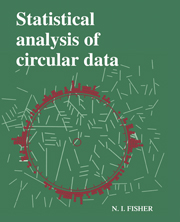Book contents
- Frontmatter
- Contents
- Preface to the first paperback edition
- Preface
- 1 Introduction
- 2 Descriptive methods
- 3 Models
- 4 Analysis of a single sample of data
- 5 Analysis of two or more samples, and of other experimental layouts
- 6 Correlation and regression
- 7 Analysis of data with temporal or spatial structure
- 8 Some modern statistical techniques for testing and estimation
- Appendix A Tables
- Appendix B Data sets
- References
- Index
5 - Analysis of two or more samples, and of other experimental layouts
Published online by Cambridge University Press: 03 May 2011
- Frontmatter
- Contents
- Preface to the first paperback edition
- Preface
- 1 Introduction
- 2 Descriptive methods
- 3 Models
- 4 Analysis of a single sample of data
- 5 Analysis of two or more samples, and of other experimental layouts
- 6 Correlation and regression
- 7 Analysis of data with temporal or spatial structure
- 8 Some modern statistical techniques for testing and estimation
- Appendix A Tables
- Appendix B Data sets
- References
- Index
Summary
Introduction
In many situations, the data set under consideration arises not as a single sample of measurements of a single phenomenon, but in the form of samples measured under a variety of experimental conditions or collected from a variety of localities. For such data, interest usually centres on two issues: first, whether there appear to be real differences between the various responses (usually, the mean directions of the samples), if so which are the responses which differ and whether there is sound evidence that the differences really exist (in other words that they are statistically significant); second, for those responses which are regarded as comparable, how to combine them to get a pooled estimate of their common mean direction. For the most part, it will be assumed that the individual samples have been drawn from unimodal distributions. The sorts of applications we have in mind are the following:
Example 5.1 Figure 5.1 shows plots of three samples of cross–bed azimuths from the Bulgoo Formation, Belford Anticline. (The data are listed in Appendix B6; Set 2 was studied in Chapter 4, Examples 4.3, 4.13, 4.14, 4.16 and 4.17.) It is of interest to decide whether the samples have been drawn from populations with a common mean direction, and if so, to form a pooled estimate of this common mean direction.
Example 5.2 Figure 5.2 shows samples of orientations of termite mounds of Amitermes laurensis, and their mean orientations, at 14 sites in Cape York Peninsula, North Queensland. […]
Information
- Type
- Chapter
- Information
- Statistical Analysis of Circular Data , pp. 105 - 134Publisher: Cambridge University PressPrint publication year: 1993
